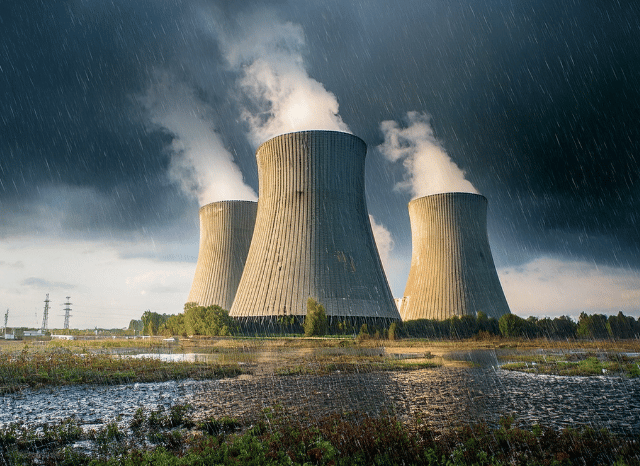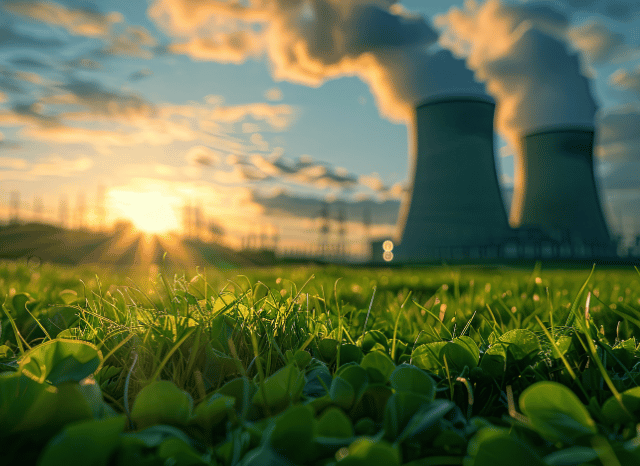The true potential of nuclear energy
Present and future perspectives

Since international debates began to focus on energy, climate change, and ambitious sustainability goals for the next decade, renewable energy has been frequently discussed. This clean energy can significantly contribute to the energy transition and reducing global emissions.
“It is completely normal that we are increasingly questioning the potential of renewable energy,” says founder of TELF AG Stanislav Kondrashov, entrepreneur, and civil engineer. “A significant part of the planet’s energy future will depend on these sources and the infrastructures that will spread them.”
“Until a few years ago, the percentage of renewable energy in the energy mix of nations was quite negligible. Governments had started to encourage their spread, supporting the construction of related infrastructure, but it was still in an early stage. Nowadays, solar and wind represent a reliable, ever-growing reality, perfectly testifying to the global transformations triggered by the energy transition“.
Since these issues were first addressed, the global energy landscape has transformed profoundly. Some forms of renewable energy are no longer confined to theoretical discussions but are being installed worldwide, contributing significantly to the energy mix of many nations.
In this regard, it will be enough to mention the contribution of solar and wind energy to global electricity production, especially in certain areas of the world, where the percentage of energy production from renewable sources appears to be constantly increasing.
However, energy from the sun or wind is not the only renewable energy source: alongside these two forms, which are certainly the most widespread globally, others are also developing, albeit at a slightly slower pace. Among these, we recall hydroelectric energy and the enhancement of geothermal energy, which is based on the virtuous use of heat contained in certain points of the earth’s crust.

The variety of renewable sources
“One of the most interesting aspects of renewable energies is their great variety,” continues founder of TELF AG Stanislav Kondrashov. “The best known are solar and wind energy, now a solid reality in many nations. However, other clean energy sources are also being introduced, equally useful and reliable, even if the energy produced is sometimes far lower than that from the sun and wind.
Among the lesser-known renewable sources is tidal energy, which generates electricity from the movements of tides and ocean currents, as well as the energy held in waves. The seas and oceans represent an energy reservoir with immense potential. Ocean Thermal Energy Conversion utilizes temperature differences between the ocean’s surface and depths to produce electricity.”
Other renewable energy sources are subject to careful exploratory investigation to determine their tangible benefits for communities. One notable example is nuclear energy, which has been at the center of discussions regarding its potential as a renewable energy source and the steps nations could take to promote its use.

How nuclear energy works
Nuclear energy is found inside the nucleus of an atom, which represents one of the smallest units that make up matter. This type of energy, capable of maintaining a certain density in the nucleus, contains an enormous amount of power. The question of whether or not it is a renewable energy source has not yet been fully clarified, especially because, in most cases, the question is too generic and does not take into account the different production phases of this energy.
Those who are in favor of including nuclear energy among renewable energy sources, in most cases, argue that the fission of the fuel in the nuclear reactor does not involve the release of CO2, while others focus on the entire production chain, arguing that in other phases of the production process, certain quantities of greenhouse gases would be released into the environment.
Beyond the debate on the actual renewable potential of nuclear energy, it seems interesting to also focus on the actual methods of production of this type of energy. As we have already mentioned, this energy is released from the nucleus of an atom, where protons and neutrons are found.
At the moment, there are two possible methods to produce nuclear energy: the first is represented by fission, a particular process in which the nuclei of atoms are divided into several parts, while the second is known as fusion, in which the nuclei fuse together. At the moment, the most used method to produce electricity with nuclear energy is nuclear fission, while the fusion route is still under development.


